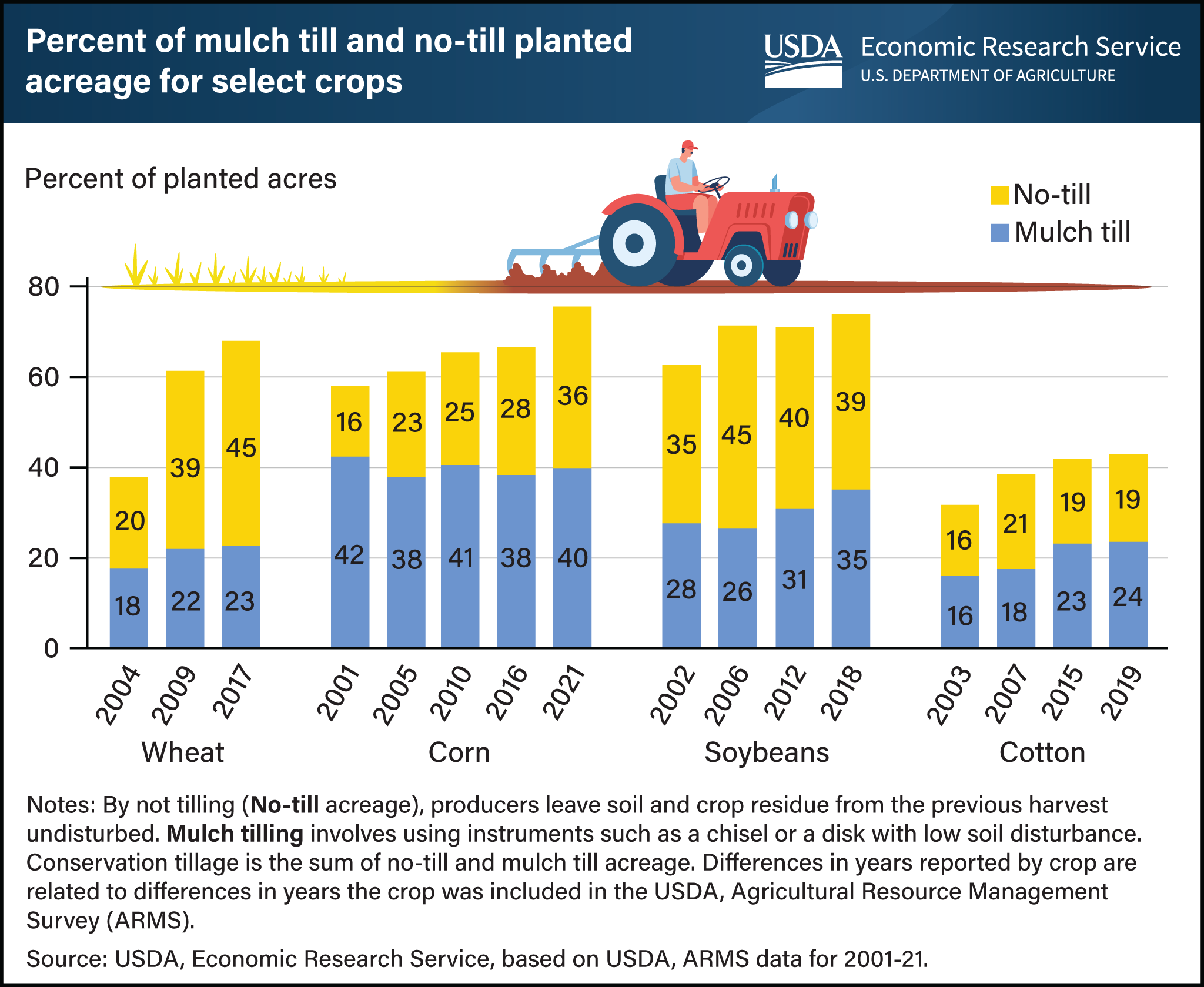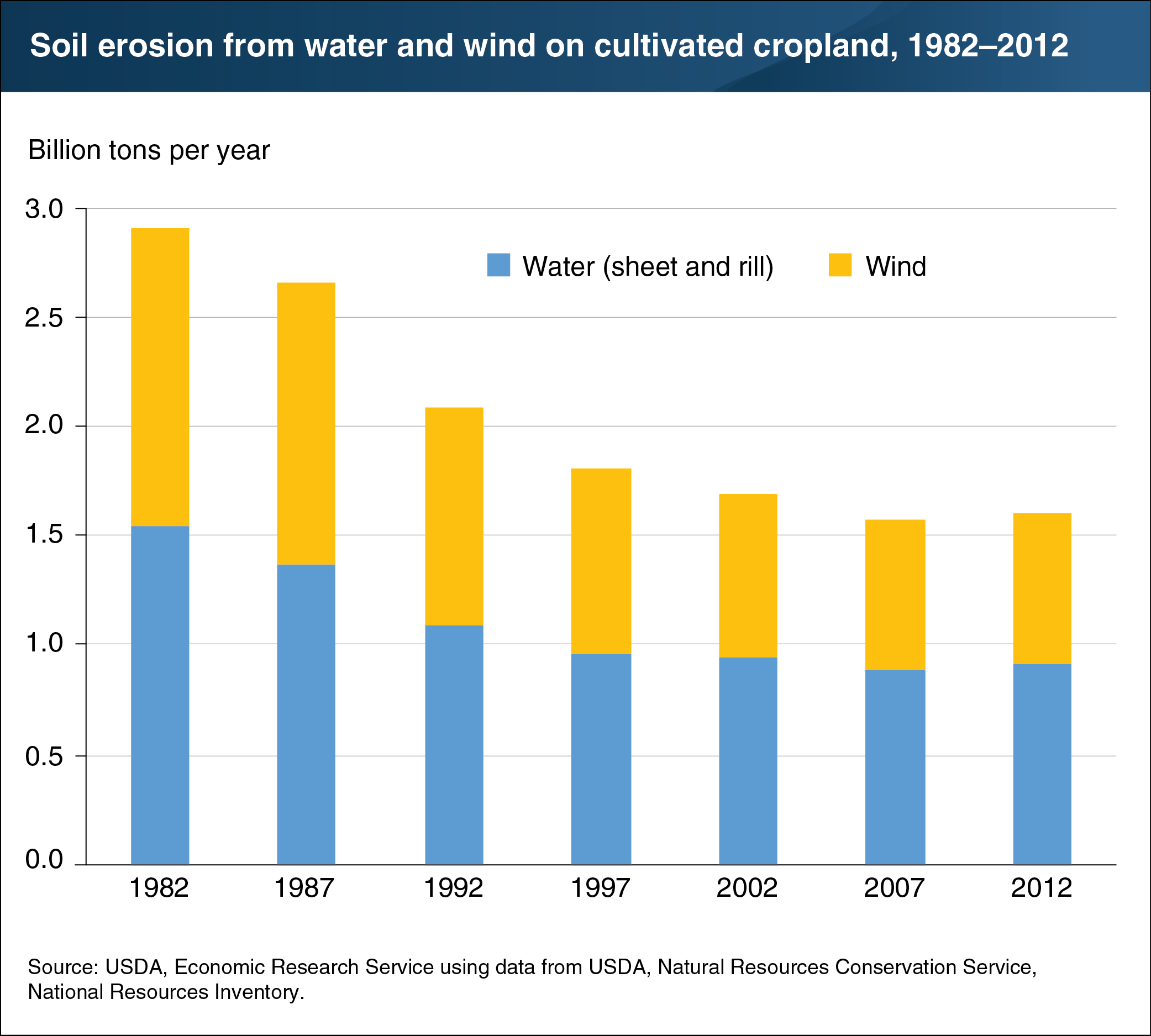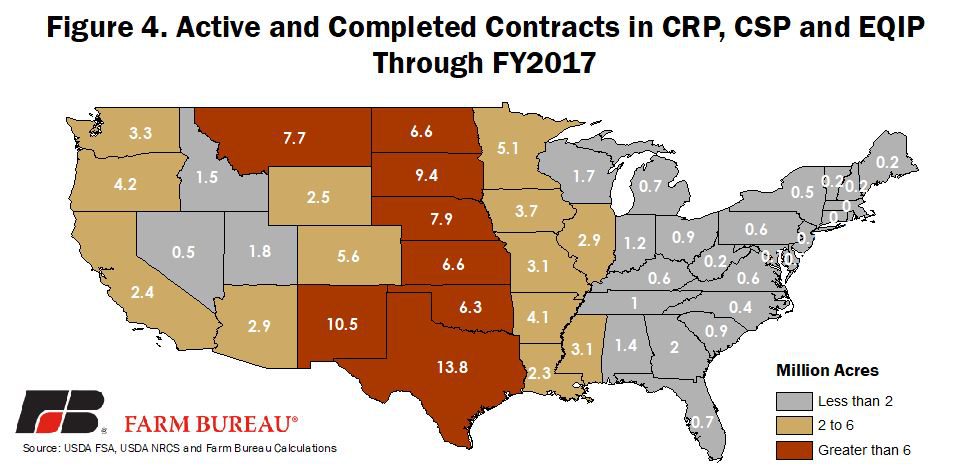Conservation was one of the primary motivations behind early farm bill legislation. Tackling the Dust Bowl days of the 1930s was especially imperative. Over the course of time, the suite of policies within this title have partnered with farm families and private landowners to make long-term investments to protect and promote soil health, wetlands, water and air quality, and wildlife and wildlife habitat. Specific climate initiatives to capture and offset more carbon emissions have also recently been added.
Authority for most of the conservation policies resides in the 1985 Farm Bill where significant improvements were made to strengthen natural resource protection and promotion. In more recent Farm Bills, there has been an increasing focus on achieving conservation through working lands rather than retiring acreage. Importantly, most of the policies are voluntary and incentives-based, aspects that make the initiatives both popular and highly successful. The exceptions include mandatory swampbuster and sodbuster provisions protecting wetlands and soil health. The Conservation Title to the Farm Bill has been recognized as one of the most effective environmental laws on the books today.
Amongst the policies in the Conservation Title lives the Conservation Reserve Program (CRP), the Environmental Quality Incentives Program (EQIP), the Conservation Stewardship Program (CSP), the Agricultural Conservation Easement Program (ACEP), the Regional Conservation Partnership Program (RCPP), and Conservation Innovation Grants (CIG).
According to a 2022 USDA Economic Research Service report, “Conservation tillage, which includes no-till and mulch till, reduces soil disturbance and preserves more crop residue relative to conventional tillage, in which a plow or other implement turns over most of the soil before planting. Conservation tillage promotes soil health and reduces soil erosion and nutrient runoff. In representative surveys, farmers reported employing conservation tillage on the majority of acres of wheat (68 percent), corn (76 percent), and soybeans (74 percent).”
“As farmers have adopted soil health and soil conservation practices, they have helped reduce soil erosion. Between 1982 and 2012, the NRCS National Resources Inventory (NRI) shows erosion on cultivated cropland (due to water and wind) declined by 45 percent, from 2.9 billion tons in 1982 to 1.6 billion tons in 2012 (fig. 3.19.3). Though part of this decline is due to less land being cropped over time, a large portion is due to changes in farm management practices.” USDA-ERS
According to an American Farm Bureau Federation analysis of the 2017 Census of Agriculture, “The 2017 Census of Agriculture revealed total farm acres in the U.S., including pasture, cropland and woodlands, at 900.2 million acres, approximately 40% of the country’s entire land area… On these 900 million acres farmers use a variety of resource-conserving and wildlife habitat-preservation practices to protect and enhance natural resources and wildlife, as well as protect the environment…. [M]ore than 140 million acres of farmland in the U.S. are currently receiving conservation-related financial and technical assistance from the federal government to install resource and wildlife preservation practices.”



